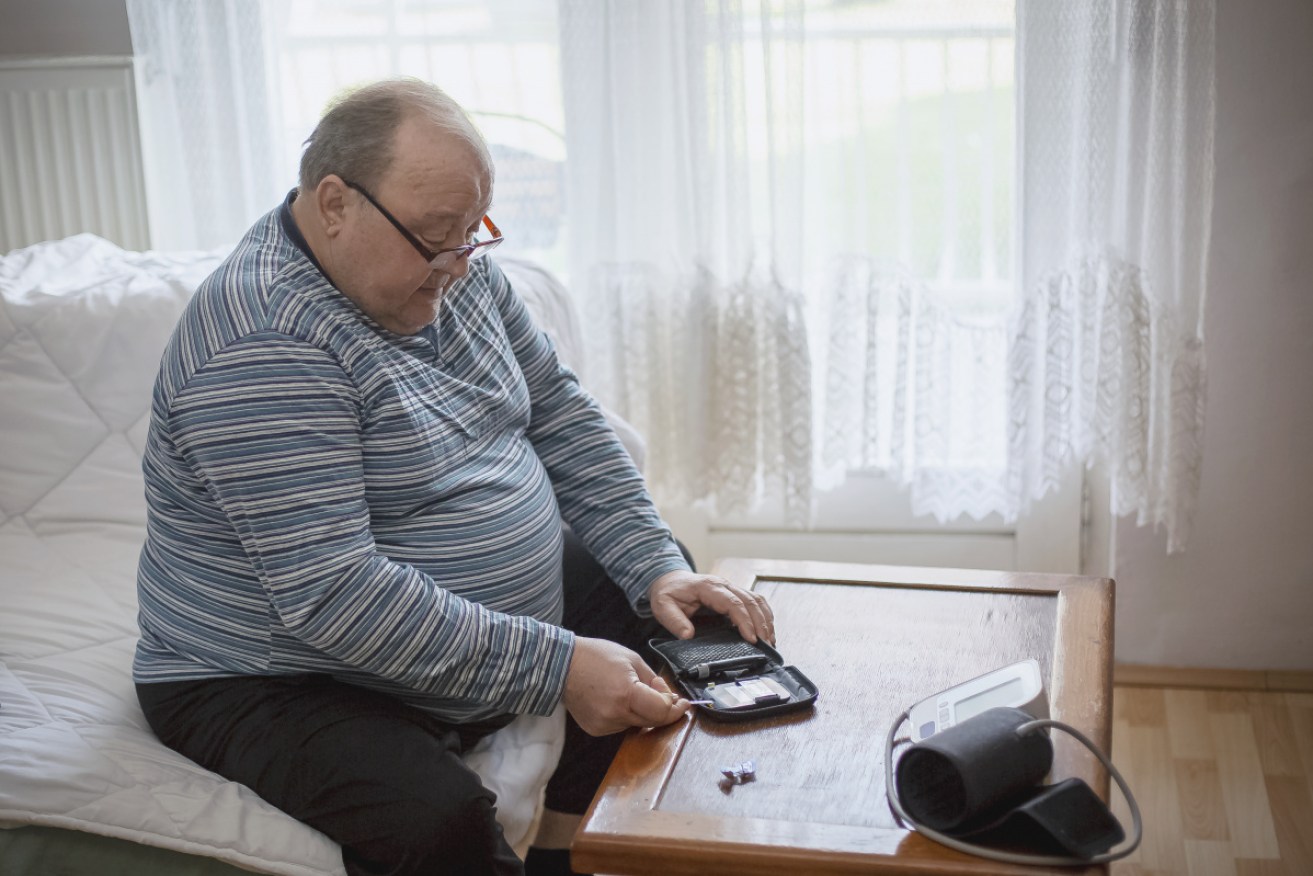Half a billion people have diabetes. But most don’t know about it


If you've been diagnosed with type 2 diabetes, you need to do more than take a pill. Photo: Getty
Nearly half a billion people have diabetes, but most of them aren’t receiving proper treatment – and more than half have not yet been formally diagnosed with the disease, according to a new global investigation.
Many people simply don’t know they have a condition that is relatively easy and cheap to treat – and one that, left untreated, will shorten their lives, wreck their hearts, blow an artery in their brains, savage their nerves, send them blind or cause their legs to be chopped off.
The big picture is that diabetes worldwide has more than quadrupled since 1980 – a rate of growth that appears to have left doctors and patients flat footed.
The findings of the study have been provided to the World Health Organisation, “which is developing efforts to scale up delivery of evidence-based diabetes care globally as part of an initiative known as the Global Diabetes Compact”.
What’s the breakdown of the study?
The study was led by physicians at the University of Michigan and Brigham and Women’s Hospital.
It draws on data from standardised household studies, “to allow for apples-to-apples comparisons between countries and regions”.
The authors analysed data from surveys, examinations and tests of more than 680,000 people between the ages of 25 and 64 conducted worldwide in recent years.
More than 37,000 had diabetes; more than half of them hadn’t been formally diagnosed yet, but had a key biomarker of elevated blood sugar.
Most were not receiving “the comprehensive package of care” – low-cost medicines to reduce blood sugar, blood pressure and cholesterol levels, and counselling on diet, exercise and weight – that could make their lives healthier, longer and more productive.
Only one in 10 people with diabetes in the low- and middle-income countries studied received this comprehensive care.
The nations in the Oceania region of the Pacific had the highest prevalence of diabetes – both diagnosed and undiagnosed – but the lowest rates of diabetes-related care.
But poor care was not strictly a poor-country problem.
The Latin America and Caribbean region was second only to Oceania in diabetes prevalence, but had much higher levels of care.
The authors note that high-income countries like the United States don’t consistently deliver evidence-based care to people with diabetes.
The takeaway for Australians
Being overweight or obese is the predominant gateway to develop type 2 diabetes, especially once you get past the age of 45.
About two-thirds of adults (and a quarter of children) are already classified as overweight or obese.
According to Diabetes Australia, 280 Australians develop diabetes every day. That’s one person every five minutes.
About 1.8 million Australians have diabetes. This includes all types of diagnosed diabetes (1.3 million known and registered) as well as silent, undiagnosed type 2 diabetes (up to 500,000 estimated).
Both types of diabetes have some of the same tell-tale warning signs.
Many people with type 2 diabetes display no symptoms. Because type 2 diabetes is commonly (but not always) diagnosed at a later age, sometimes signs are dismissed as a part of ‘getting older’.
In some cases, by the time type 2 diabetes is diagnosed, the complications of diabetes may already be present.
Symptoms include …
- Being excessively thirsty
- Passing more urine
- Sudden weight loss
- Feeling tired and lethargic
- Always feeling hungry
- Having cuts that heal slowly
- Itching, skin infections
- Blurred vision
- Feeling dizzy
- Leg cramps
- Tingling in the feet and fingers, otherwise known a peripheral neuropathy.
Read more about what these symptoms mean here.
Treatment is more than taking a pill
Most people are initially prescribed Metformin in pill form to control blood sugar levels and regulate the liver.
It’s a very good drug, but its effectiveness can start to decline after five years.
Many people just take this pill and think everything will be OK.
When you’re first diagnosed, it can take a number of weeks for the condition to stabilise – by which time you’ll have been referred to a diabetes nurse or counsellor who is usually stationed at a pharmacist one or two days a week.
This is the person who will show you what you can eat, and how much of it – and will serve as a cheerleader for you to change your habits.
Losing weight, improving your blood pressure, getting your cholesterol to a healthy level, regularly exercising, drinking more water – all the boring things you’re always hearing about.
You also need to get your eyes checked once a year, and your feet checked for healthy blood flow.
Keep this in mind: About 10,000 Australians go to hospital every year for foot ulcers. A good number of those go home with the infected foot missing.








